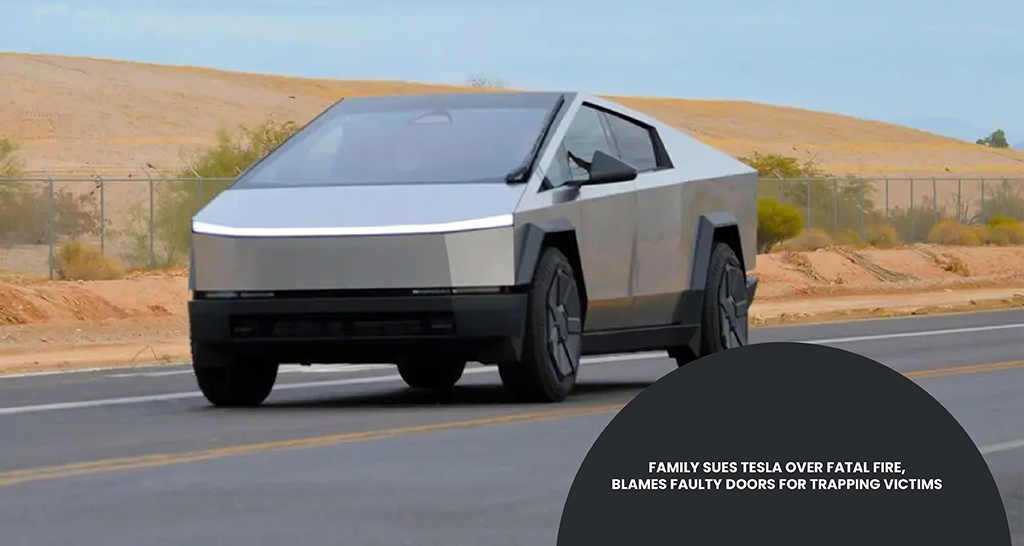Tesla Inc. is currently dealing with a wrongful-death lawsuit brought by the family of a couple from Wisconsin. They allege that a faulty door design in the Model S trapped five individuals inside the vehicle during a fire, which tragically resulted in their deaths following a high-speed crash.
The lawsuit, which was filed in Dane County Circuit Court, claims that the electronic door mechanisms of the car failed after the vehicle’s battery caught fire following a collision near Verona, Wisconsin, in November 2024. The flames quickly consumed the electric sedan, leaving the occupants trapped as the power-dependent door handles and interior releases malfunctioned, according to the complaint.
According to the filing, Jeffrey and Michelle Bauer were tragically among the victims who lost their lives inside the vehicle when rescuers could not get the doors open. The family claims that Tesla’s door system, which is designed to sit flush against the car’s body for both aerodynamic and aesthetic purposes, relies completely on electricity. When the car loses power during a crash or fire, the handles retract, making it tough to find the interior manual releases, especially in dire situations like heavy smoke or flames.
The plaintiffs argue that Tesla was aware of the potential risks linked to its electronic-first door designs but chose not to put in place effective manual overrides or redesigns, even after receiving numerous complaints and reports of incidents from owners. They assert that the company put aesthetics ahead of safety, resulting in a “trap-like design” that made it difficult for victims to escape during emergencies.
The lawsuit names both Tesla and the estate of the vehicle’s driver as defendants. It claims that Tesla was negligent and liable for the product, as well as responsible for wrongful death. The suit argues that the company didn’t adequately inform consumers about the dangers associated with its door systems and the risks of battery fires.
This lawsuit is just one more piece in the puzzle of increasing scrutiny surrounding Tesla’s safety practices and product design. Federal regulators have already investigated reports of accidents where Tesla’s electronic door handles or locking systems failed during power outages. Legal experts point out that these cases could establish significant precedents about finding the right balance between innovative design and essential safety standards.
In earlier comments on similar matters, Tesla has consistently asserted that its vehicles not only meet but often surpass safety standards, and that their door mechanisms come equipped with emergency manual releases. However, the Bauer family argues that these releases can be hard to find or use in moments of panic, particularly when visibility is poor and every second is crucial.
This heartbreaking situation brings to light bigger issues surrounding the growing complexity of today’s electric vehicles. With so many software-driven systems, there is a real risk of failure when they are put under physical stress or lose power. Consumer advocates are pushing for safety designs that are not only effective but also intuitive and mechanical, especially when human lives are on the line.
As this case progresses, it is likely to shine a light on Tesla’s design approach and the regulatory scrutiny surrounding the safety systems in electric vehicles. The Bauer family is pursuing unspecified damages and is also looking for a formal recognition that the design flaws at Tesla played a role in the tragic deaths of their loved ones.

